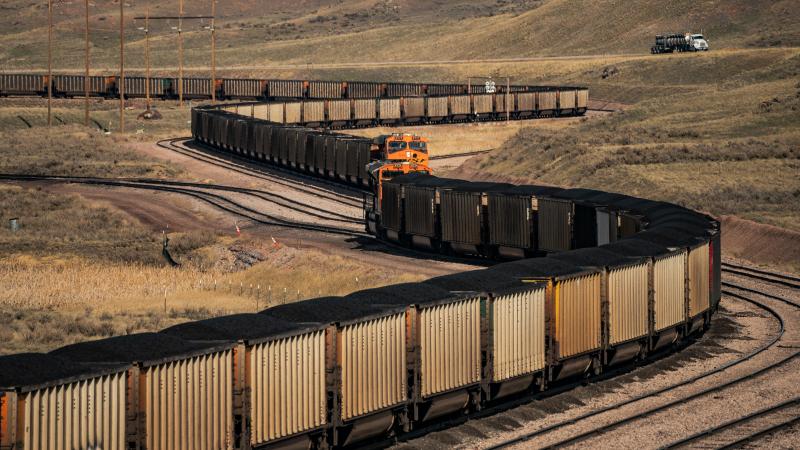Experts say new EPA power plant rules will drive up energy costs and further destabilize U.S. grid
China has increased its total coal-fired generation capacity by 233 gigawatts, whereas the U.S. has retired more than 95 coal-derived gigawatts in production.
The Environmental Protection Agency released rules Thursday requiring coal-fired power plants to install carbon capture technology in order to keep running past 2039. The requirements begin in 2032.
The technology captures carbon dioxide emissions from the plant and then transports them for storage in underground wells. The costs of the EPA’s demands will likely be so high that owners of coal-fired power plants will choose to retire them rather than invest in the changes.
“Aside from the obvious impacts of driving up costs while further destabilizing America’s already rickety electricity grid by eliminating critical baseload power, EPA’s ill-intentioned and legally questionable rules package will seriously impact our state’s people,” Travis Deti, executive director of the Wyoming Mining Association, told Just The News.
Increasing risks of blackouts
The EPA’s carbon capture rules will also apply to new natural gas-fired power plants. Those that reach at least 40% of their annual capacity, according to Axios, will need to implement carbon capture starting in 2032. The original proposal included existing gas-fired power plants, but those were spared in the final rule. However, Axios reports, it’s expected that if Biden is reelected, those will be the next target of his administration.
The EPA projects “up to $370 billion in climate and public health benefits over the next two decades, but the North American Electric Reliability Corporation, in its long-term and seasonal assessments, has been warning of increasing risks of blackouts partly due to retirements of coal plants and increasing reliance on weather-dependent generation from wind and solar power.
Isaac Orr and Mitch Rolling, energy experts Mitch Rolling and Isaac Orr, policy fellows for the Center of the American Experiment and authors of the “Energy Bad Boys” Substack column, demonstrate in a recent piece that blackouts painfully increase the cost of electricity. The writers calculated the impact on electricity rates of a single blackout earlier this month on a Colorado supermarket, by adding the losses from the blackout to the electricity rate the business pays. According to their analysis, the business’s rate for the 24-hour blackout was $12,212.82 per megawatt hour.
“This effort from the Biden Administration is like hunting a unicorn, which doesn’t really exist, without any regard for what might be trampled during the pursuit,” Deti said.
Should the U.S. meet the standards and eliminate the 1.65 billion tons of carbon dioxide emitted from the electric power industry, between 2018 and 2022, China’s emissions increased by more than that since 2016.
Since the signing of the Paris Accords in 2015, which was ratified by 195 countries pledging among other things to retire all coal-fired power plants by 2030, China has increased its total coal-fired generation capacity by 233 gigawatts, whereas the U.S. has retired more than 95 gigawatts. Delivered steadily for one month, 233 gigawatts is roughly enough to power nearly 260,000 American homes.
Since 2016, the average electricity price in the U.S. has risen nearly 20%. The rise in energy costs doesn’t just impact household utility bills. Europe, which has been pursuing the goal of net zero more fervently than the U.S. — including stringent restrictions on developing domestic oil and gas resources — is seeing its industries are shutting down under the crushing weight of higher energy costs.
Sacrificial lamb
For Wyoming, which produces 41.2% of the nation's thermal coal used in power generation, the EPA rules represent a real threat to the state’s economy, Deti said.
“Wyoming is once again the sacrificial lamb on the altar of the climate change cult,” he said.
In 2020, the state passed a bill that directed utilities to produce 20% of their electricity from coal-fired power plants fitted with carbon capture technology by 2030. In response, Black Hills Energy, a major Wyoming energy provider, estimated the cost to fit two existing coal plants with the technology would be $980 million, which is three times the cost expended to build the plants. Rocky Mountain Power, another major power provider in Wyoming, stated in its comments that adding carbon capture to its existing plants was “not economically feasible at this time.”
Steve Goreham, an energy researcher and author of “Green Breakdown,” told Just The News said that not much has changed since the two utilities made their calculations. He points to the Quest plant in Alberta, Canada, which is a carbon capture and storage facility on a hydrogen production facility.
An investigation in 2022 by watchdog group Global Witness found that the facility emits more carbon dioxide than it captures. The $1 billion investment Shell made into the facility was supported by $654 million in subsidies from the Canadian government.
While the carbon dioxide captured can be used in enhanced oil recovery and potentially other products, most of it will get stored underground. Because storing carbon dioxide underground generates no revenues by itself, the only way an industry can exist is with government support. The Inflation Reduction Act increased the tax credits available for carbon capture technologies, which pay more if the gas isn’t used in oil production.
Federal money is the lifeline to survival
Because of the uncertainty in forecasting how much carbon capture will be deployed, estimates of their cost vary widely on how many tax credits will be generated from the industry. According to a report by the Congressional Revenue Service, the Department of the Treasury’s tax expenditure estimates for the tax credits are $30.3 billion from 2022 to 2032.
Goreham said it’s standard in the Biden administration that the industries that aim to bring the U.S. to net-zero emissions can’t survive without federal support.
“We have whole industries right now that wouldn't exist without all this federal money. It's just the looniest thing in the world in my opinion,” Goreham said.
As with many rules passed as part of the Biden administration’s climate agenda, the newest EPA power plant rules will likely face legal action. Two years ago, the U.S. Supreme Court ruled that the EPA exceeded its authority to regulate greenhouse gas emissions from existing coal- and gas-fired power plants under the Clean Air Act. When the latest rules are challenged in court, the outcome may be the same. If not, Americans will likely be paying a lot more for energy in the coming years.
The Facts Inside Our Reporter's Notebook
Links
- released rules Thursday
- according to Axios
- long-term and seasonal assessments
- Center of the American Experiment
- Energy Bad Boys
- calculated the impact
- single blackout
- increased by more than that since 2016
- has risen nearly 20%
- stringent restrictions
- its industries are shutting down
- technology would be $980 million
- not economically feasible at this time
- Green Breakdown
- emits more carbon dioxide than it capture
- enhanced oil recovery
- potentially other products
- report by the Congressional Revenue Service
- Supreme Court ruled that the EPA exceeded its authority
















